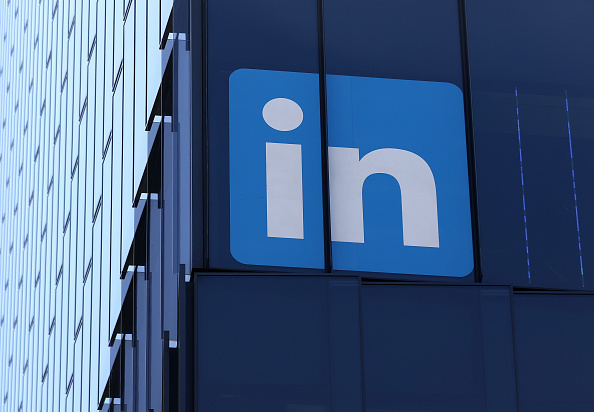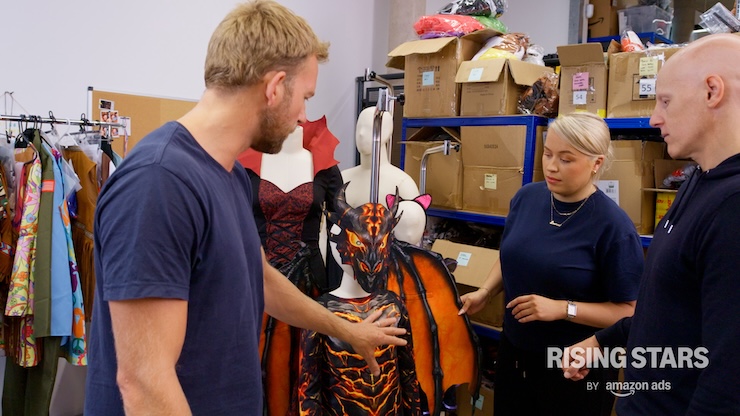Tech conferences are often hyped as ‘must attend’ events for start-ups. Here’s your big chance to get your name out there, and press palms with prospective investors, partners and customers.
So you splurge your marketing budget registering for all the big ones. You pitch up your booth, armed with a team of enthusiastic promo staff, and a swag of freebies to give away to whoever’ll take them.
And then…nothing. A day spent reciting a tired sales pitch to a meagre drip of tyre-kickers. The leads you desire swiftly passing by, stopping instead at your competitor’s booth across the aisle from you. Even worse, you didn’t get on any of the main stages to present your amazing business to the world (do they not know who you think you are?!).
Basically, you’ve just spent a small fortune and completely wasted your time.
But it doesn’t need to be like this. Conference season does in fact offer a wealth of networking and credibility-building opportunities for start-ups that approach them in the right way. In the two years since founding Pixoneye, we’ve been involved in a string of events – including Web Summit and Mobile World Congress – and have learnt a thing or two along the way.
I’m going to give you my top five tips to nail the conference calendar and grow your start-up.
Have a booth that people actually want to visit
Avoid ‘booth babes’, demo cool technology, make it competitive and make the experience as interactive and experiential as possible.
There are few sorrier sights than an empty booth at a packed conference. At established events, the competition is huge, leading to what I call TOMBS – Too Many Booths Syndrome.
The difference between a booth crowded from dawn to dusk, and one resembling a desolate scene from a wild west movie, can be boiled down to a few simple attributes.
Firstly, you need attraction. What’s going to make your booth stand out among the throng? There are, broadly, two approaches start-ups take towards this. One is the blatantly chauvinistic tradition of hiring ‘booth babes’ to prey on the (regrettably) largely male attendance at tech conferences. This should be avoided. It says too much about your brand and culture, and will inevitably generate very weak leads.
The other option, which I would recommend, is to attract attention through technology. It doesn’t necessarily need to be the tech your start-up uses, but remember that the people who attend these events love technology, and their interest will be piqued by the latest advances, such as VR or drones. The visual allure will give people a reason to stop and size up your business.
The second piece of advice is to hold a competition. When we first attended Web Summit, we decided to invest in Pixoneye-branded hats to give away. An administrative error led to us accidentally ordering 1,000 rather than 100. Surprisingly, most people don’t want to wear a hat brandished with a start-up they’ve never heard of. At our next event, we instead bought a single drone (at a cost of around 100 euros), and had a competition to win it based on an exchange for business card. This option was far more successful, and provided us with prospective customer contact details.
Thirdly, to overcome the issue of bare booths, organise some pre-planned visits. To do this, approach a series of larger organisations attending the event (think of the Deloittes of the world) and offer them special demonstrations for their staff at set times, spread across the day. Having a crowd present will create a buzz and help to encourage other to stop by to see what the fuss is about.
Fourthly, capitalise on the herd effect at a conference. It’s basic human psychology that we want to follow the crowds. Think of the food stall with queues around the block compared with a deserted stand. Where would you rather eat? The same laws apply here. Even during quiet periods, make sure there’s people in front of your booth talking and giving demonstrations, even if it’s your own staff receiving the demos. At the very least, it’ll stop your staff getting bored – the worst vibe your booth can emit to passers-by.
Finally, make your booth as interactive as possible. We love being able to touch something tangible – it accelerates our understanding. Even if your product or service doesn’t lend itself to an interactive screen, find something that you can use to engage visitors and bring your booth to life. This will help your staff to explain the product and maintain contact long enough to at least get a business card. This will also help visitors to remember your booth post-event, against the scores of other booths they passed that day.
Join the debate
Break free from the booth and find opportunities to present and interact – be it via workshops, panels or keynotes!
Conferences shouldn’t solely be about marketing via booths. This is your big chance to get attention and talk about your business. Presentations are the perfect way to do this. The chances that you’ll be invited to present at the main stages of Disrupt or Startup Grind at the first time of asking are, realistically, zero. But that’s no reason to overlook the various opportunities to speak at these events. Conferences are filled with speaking opportunities.
The trick here is to start small, and build up. Take any opportunities to present you can. It may only be one or two at your first event, but these offer an opportunity to create and refine your presentation. The better you get, the easier it is to level up and take a bigger stage at the next event. They may also lead to further opportunities for discussions with those who attended post-presentation.
Don’t forget also to include a call to action. I like to end my presentations with a big, open-ended question, for example what’s the next big trend in digital marketing, then invite people to come talk to me about it afterwards, or find me at the booth later in the day.
Mobilise your team
You are stronger together, divide and conquer with your team on site making sure all elements of the event are covered as well as use the time for some team bonding.
At conferences, the days are long, the demands on your time are incessant, and the opportunities are bountiful. You and your co-founder can’t do it all yourselves.
You need manpower to make sure that anyone interested in finding out more about your business is attended to, and to staff those moments when you’re away from the booth.
If you don’t have the staffing resources within your business, then be ready to hire. This isn’t the stunning promo staff I mentioned earlier, but tech-savvy people who can tell your brand story and demonstrate the product’s capabilities. Training is key to this. Make sure they’ve been properly briefed in advance, otherwise it will be clear to everyone that they’re winging it.
Also, make sure you bring all your staff along. This is a great opportunity for team bonding, and for making sure everyone in your business gets an opportunity to ‘sell’ the vision and product.
Pick the pitch
It may be tempting to engage in some new business speed dating, but when given the chance, always choose to present – that environment gives you your Steve Jobs moment, you just have to own it.
It’s common at conferences that you’ll be given a choice: an opportunity to pitch your business to an assembled crowd, or a ‘speed dating’-style round of meetings with potential investors. Always pick the pitch.
The difference between these two options tends to be that the pitch will be about the big picture story of how your business solves a customer problem, while the meetings tend to go into the incremental detail of your business, looking at cash flow, growth, etc.
I view the pitch option as the chance for your ‘Steve Jobs moment’. You take to the stage, you sell your vision, and leave them wowed. You’re not going to get this in a three-minute sit down meeting. You get the crowd excited about your idea, then they’ll be wanting to speak with you to find out the finer detail.
Hire a chief readiness officer
Events can’t be an afterthought – get someone who is sales savvy committed to putting you in the venues that matter in front of the audiences which will value you.
This is perhaps the most important step.
It’s tempting to view conferences as an add-on to your day-to-day duties. Every now and again you register for an event that looks relevant (it has startup in the title!), and then in the weeks preceding you start hastily piecing together the arrangements. This is the wrong approach.
Conferences are not an afterthought. You need someone dedicated to making sure you get the full value from your investment of time and budget.
This is someone who’ll be researching events across the calendar, picking out the two or three where your business must be present. They’re planning activities three months ahead, booking meetings and speaking opportunities, and sorting the logistics in granular details. Plus, they’re managing your social channels, making sure you have a flow of content before, during, and after the event.
This is your chief readiness officer (CRO). Hire them. Value them. They’ll be the one making sure that all your time and effort is worthwhile. So who is this CRO? Are they drawn from your tech team? Are they an intern you’ve selected because they once went to Disrupt? No. Your CRO is a sales expert. They’re a bulldozer with the skills to convince the organisers at Ad:Tech that they’d be crazy not to have you at their event.
My CRO, Avishay, has been a godsend. He successfully negotiated Mobile World Congress for us, getting me on the stages I needed to be on, which led to us winning the 4YFN Award in Barcelona.
Time to get planning
Conference season can be a massive waste of time for start-ups that don’t treat the events with the level of focus they require. It is hugely demotivating to walk away from a conference feeling you didn’t make the most of it. Believe me, I’ve been there.
To maximise the potential of a conference for your business, you must have a clear idea of what you want to get out of it. Pick the conferences that are most relevant for your business – as a mobile-centric software company, I need to make sure we’re at MWC and Ad:Tech London, for example. From there, work with your CRO to make sure your involvement is fully fitted to your needs.
Start planning three months out, and exhaust every opportunity there is.
If you do it right, you will be putting your start-up in front of the very people you want to reach, building your credibility as a founder and leaving a lasting impression of what your business has to offer.
The opportunities are there. Now it’s time to get planning on what events you’ll be at in 2017.
Ofri Ben Porat is CEO of Pixoneye.





